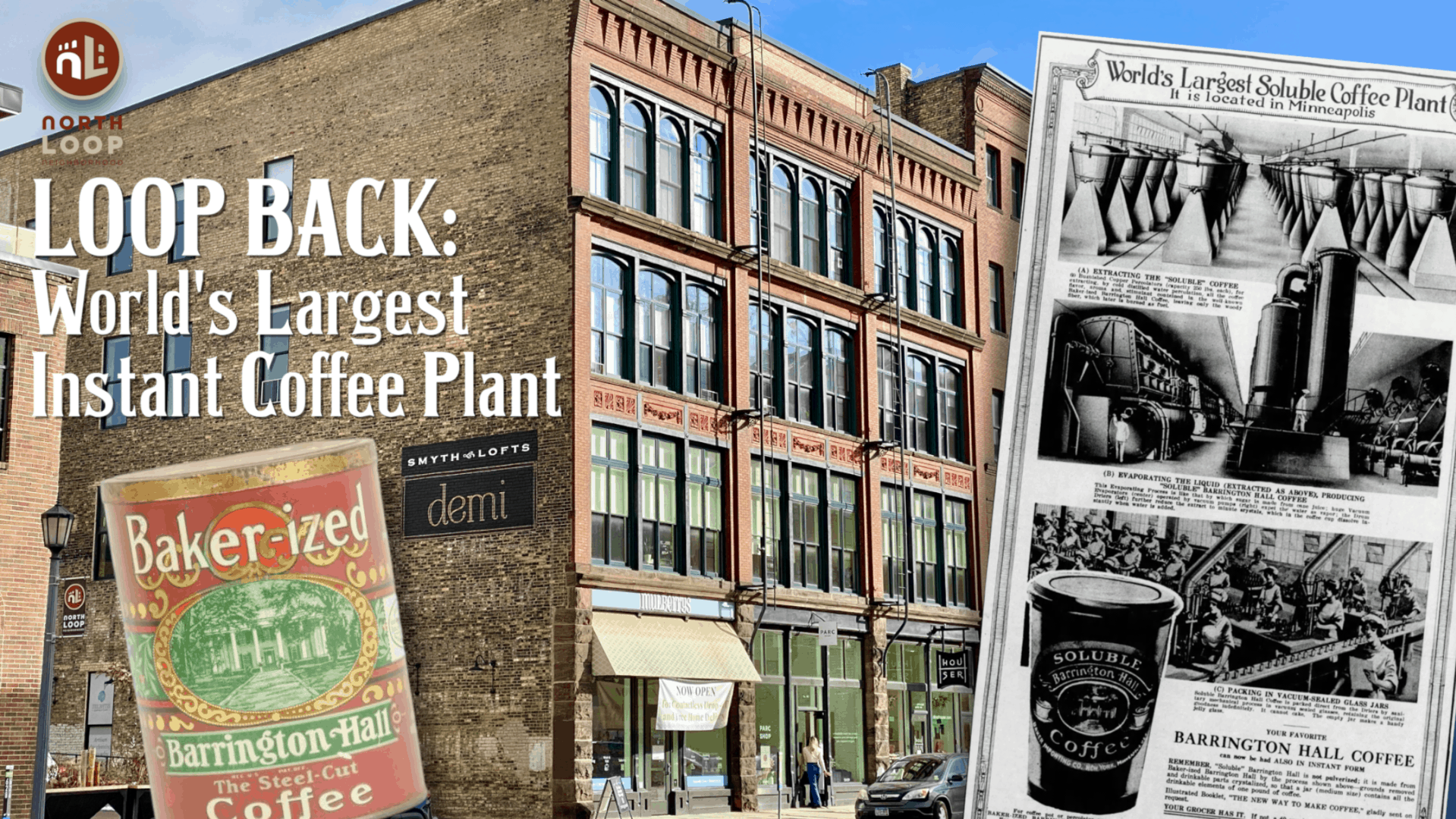
Loop Back: Making Coffee
Built in 1885, the building at 212 North 2nd Street is now home to shops, apartments and an award-winning restaurant. But in its early years, it helped one pair of brothers build a bustling boot and shoe business, followed by another set of brothers who turned it into a coffee production plant.
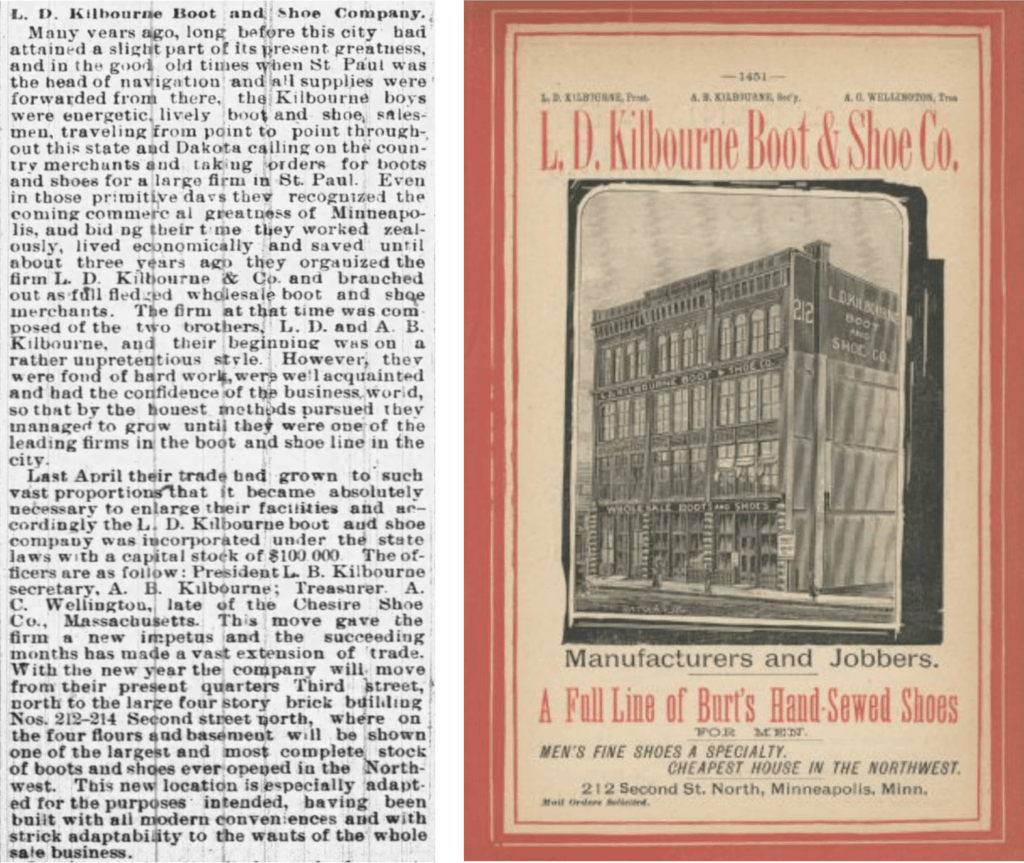
1888 newspaper article and advertisement
From 1888 to 1992, Louis and Arthur Kilbourne along with their business associates sold large volumes of boots and shoes from this four-story warehouse.
An 1888 profile in the Minneapolis Tribune indicated that the brothers had gone from being successful traveling shoe salesmen to owning their own wholesaling business. They ultimately opened a new shop near 9th and Nicollet in downtown Minneapolis.

In 1900 a fledgling coffee company, Baker Importing, moved into the facility. It was owned by another set of brothers, William, Thomas and Roswell Baker.
They were transplants from Georgia and the label on their coffee cans featured the famous southern mansion in Georgia, Barrington Hall, where they grew up before moving north as adults.
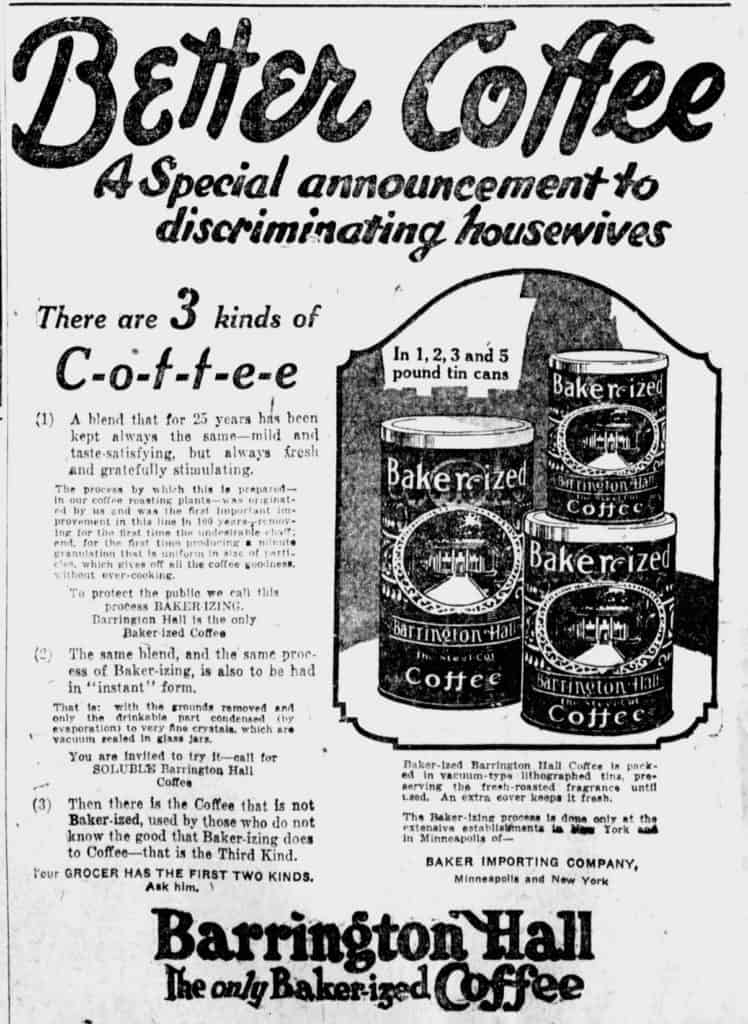
Instead of grinding whole coffee beans, the Baker brothers developed a steel-cutting process that removed the bitter impurities. They called it “Baker-izing,” and applied it to their instant coffee too.

Above is a glimpse inside the plant from a 1922 newspaper clipping. It featured illustrations of how soluble (instant) coffee was produced inside the facility, which it dubbed the “World’s Largest.”
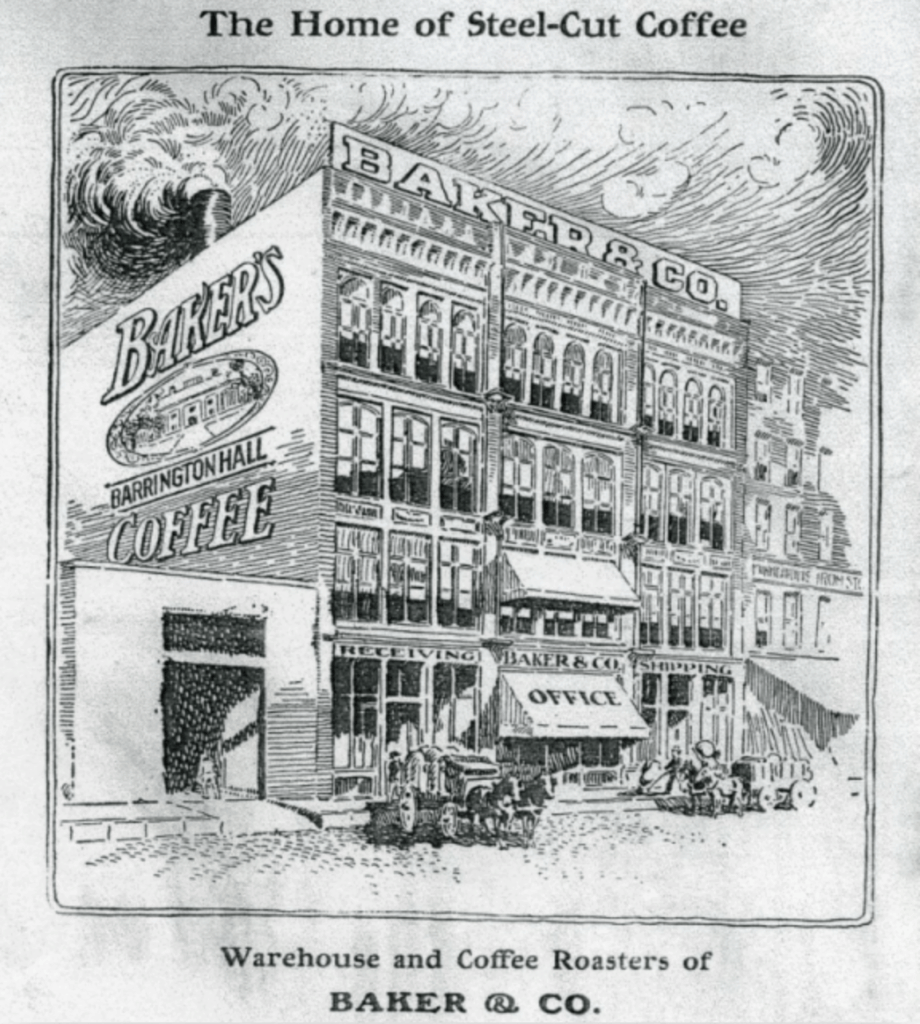
Imagine the smell of coffee in our neighborhood back then, as they reduced it from liquid to crystals and released the vapors to the outside. The image above is from the Smyth Lofts website.
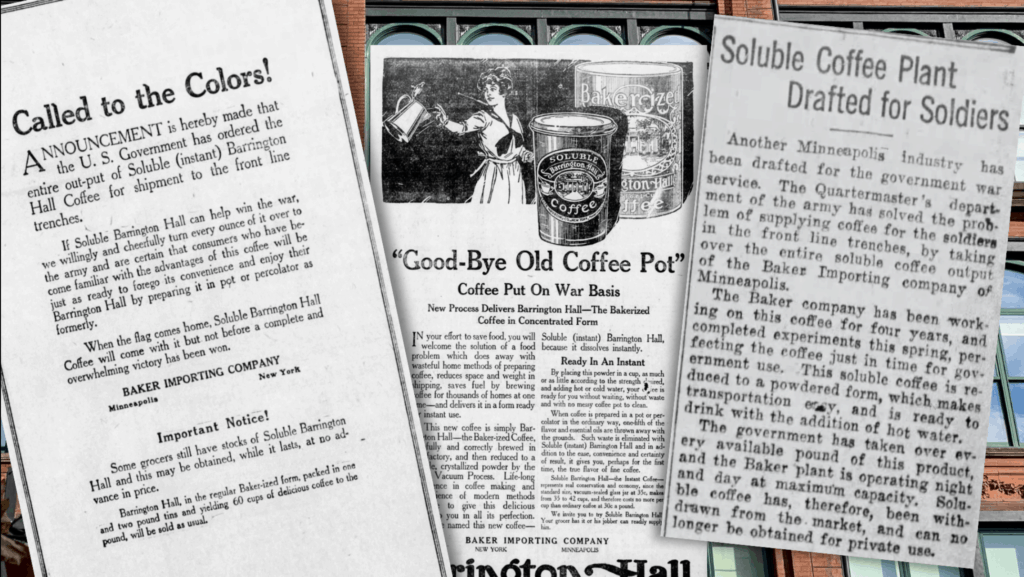
The US Army turned to Baker Importing to supply coffee to the troops in both World Wars. In 1918, the plant was operating around the clock at maximum capacity, with 100% of its output going to the U.S. Government.

As the popularity of instant coffee grew in the 1930s, the company set up tables in downtown Minneapolis stores like Donaldson’s to give out samples. The plant at that point was producing 100 tons of coffee each week, according to a 1935 article.

This 1935 article above includes a photo inside the plant and details some of the innovations that the Bakers brought to the coffee industry.
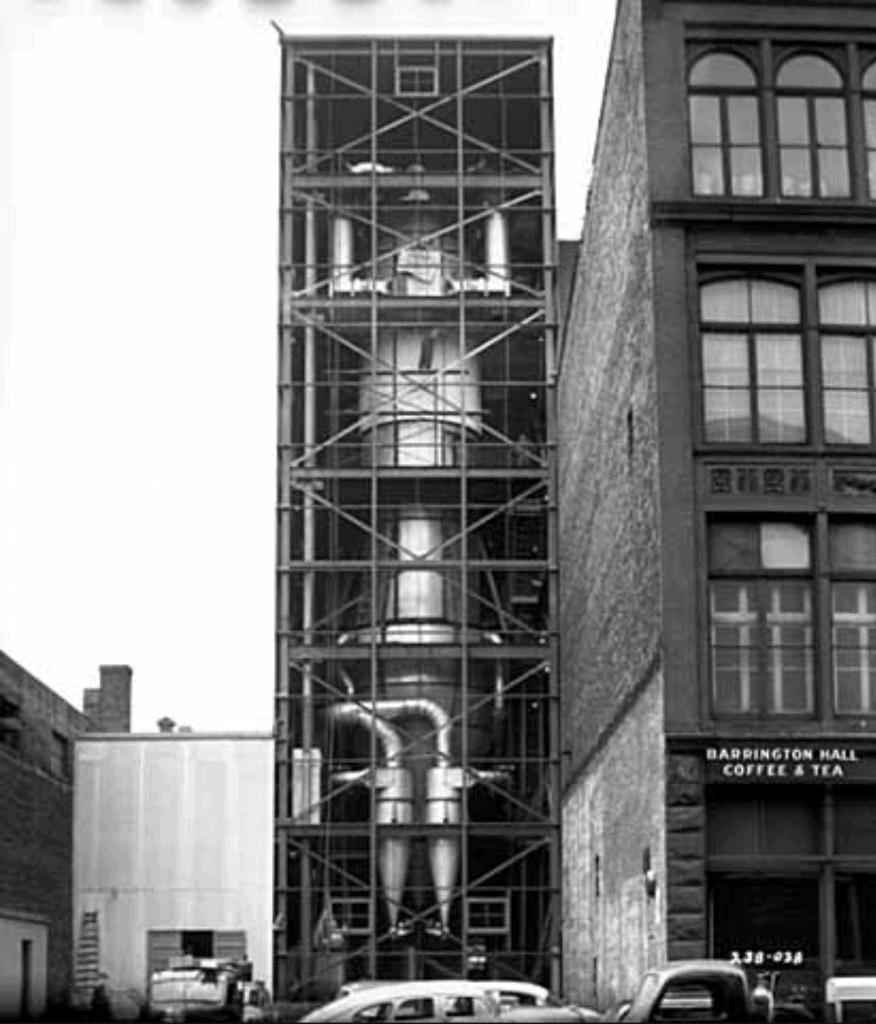
This 1956 photo from the Minnesota Historical Society shows a 6-story coffee tower in what’s now the parking lot for Demi restaurant.

One more notable tidbit: the Baker brothers’ mother, Eva, was childhood friends with Teddy Roosevelt’s mother. And as this 1923 article notes, Roosevelt visited Barrington Hall when he was president.
Please visit the Historic North Loop section of this website for many more fun photos and articles about our neighborhood’s history.
By Mike Binkley, North Loop volunteer*
(*not an actual historian; I just pulled together information from newspaper archives, public records, online searches and most helpfully, the digital archives at the Hennepin County Library)

